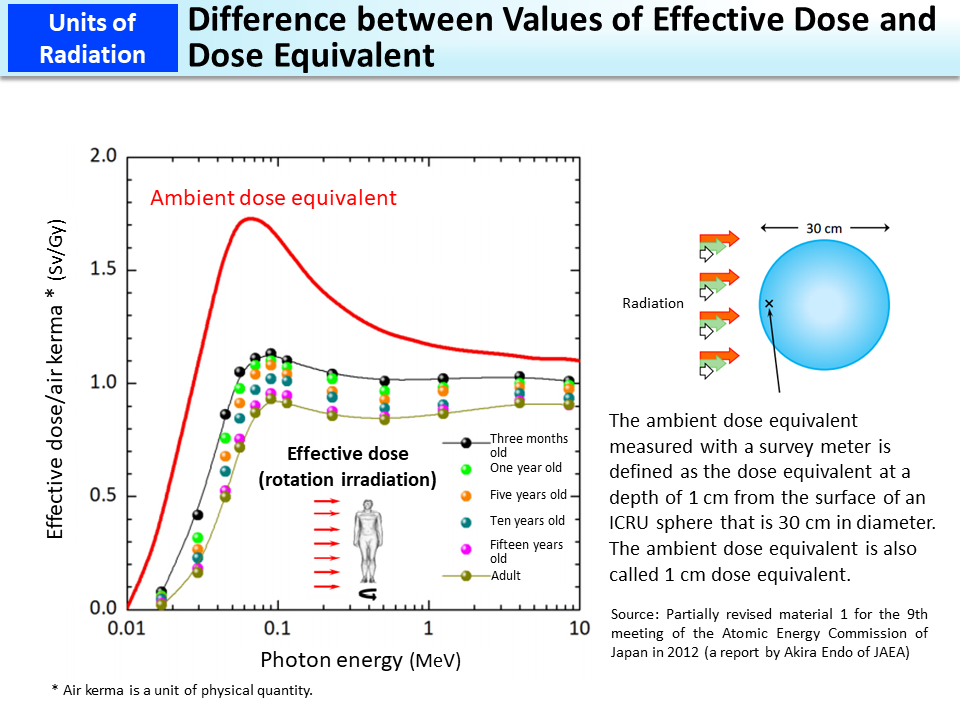Difference between Values of Effective Dose and Dose Equivalent
The ambient dose equivalent measured with a survey meter is set to always indicate a larger value than the effective dose.
This is also the case for a personal dosimeter when measuring radiation incident only from the front. However, in a setting where a personal dosimeter is worn on the body and radiation sources are evenly distributed, measured value will be close to the value of “effective dose” because of the self-shielding effect of the human back, etc.
The graph above shows differences between effective dose (including the self-shielding effect of the back, etc. in the case of even irradiation by rotation) and ambient dose equivalent to the energy of incident γ-rays. While the degree of self-shielding slightly varies depending on differences in physique due to age, the value measured with a survey meter for Cs-137 γ-rays at 662 keV is shown to be about 30% larger than the effective dose for adults and the value measured with a personal dosimeter (personal dose equivalent).
(Related to p.41 of Vol. 1, “Dose Equivalents: Measurable Operational Quantities for Deriving Effective Doses”)
- Included in this reference material on March 31, 2017
- Updated on March 31, 2019

